Review: Motorola Moto Z Play and Hasselblad True Zoom Mod
Sep 8, 2016, 3:30 PM by Eric M. Zeman
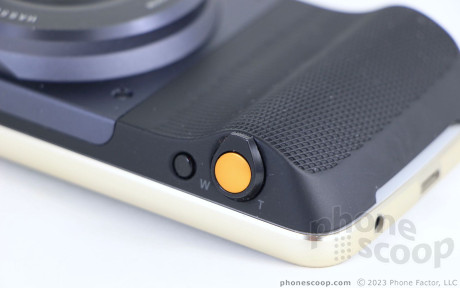

Motorola Moto Z Play
Motorola's latest Moto Z handset is a compelling and affordable Android smartphone that also happens to be compatible with the company's ecosystem of Moto Mods. Along with the Z Play, we've reviewed the Hasselblad True Zoom camera mod.
Hardware
Is It Your Type?
The Moto Z Play Droid is a less-costly, less-powerful version of the Z Droid and Z Force Droid handsets Motorola released earlier this year. If you're interested in Motorola's innovative system of Moto Mods but are looking for a lower point of entry, the Moto Z Play Droid is it. Moreover, Motorola claims the Z Play has its longest-lasting battery ever.
Body
The Moto Mod system demands certain commonality among compatible phones. That means the basic shape and appearance of the Z Play matches those of the Z and Z Force. It carries over the size (length/width) and profile. The Z Play is more similar to the Z Force than the Z thanks to its thickness and weight, but there are plenty of subtle differences (other than price/specs) that set the Z Play apart from its stable mates.
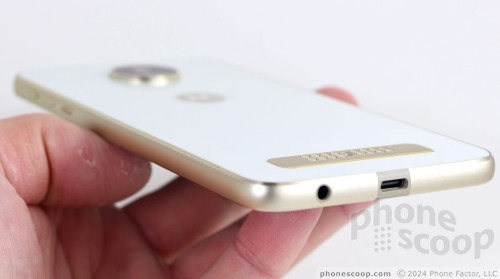
The Z Play is made of metal and glass. The face features 2.5D curved glass that's fitted precisely into a machined metal frame. The rear is glass from top to bottom (a change from the metal-backed Z and Z Force). The copper-colored contacts stand out visually and the huge camera module looks like a robot eye, staring at you. The camera and copper contacts are arranged in precisely the same locations as on the Z and Z Force so the Z Play may accommodate the Mods. Our review unit has white glass and gold metal accents, but a black/gray version is also available. The Z Play is a modern phone through and through. It's probably worth noting that the dual glass panes make it more likely to break when dropped. Thankfully a plastic rear cover mod comes in the box.
The Z Play is a big ol' phone. The thickness and weight are the only two major physical specs that differ from the Z and Z Force, and even then just barely. The phone measures a hair thinner than 7mm, and the weight isn't bad at 5.82 ounces. The Z Play is a two-handed phone and may not work for people with small hands. The device fits into most pockets quite easily, but the weight makes it fairly noticeable as you walk around.
The materials, manufacturing, and quality are top-notch. The frame hugs the front and rear glass panels tightly. The phone looks and feels like a more expensive flagship. The Z Play hardware is on par with the best phones in the market.
Bezels are more visible on the Z Play than the other Zs due to the design and color combo. The side bezels are fairly thin, but there's plenty of white above and below the actual display. A raised lip signals the location of the earpiece above the screen. The user-facing camera is off to the right, while the selfie flash is off to the left. (This is opposite the Z Force.) It's easy to spot the square-shaped fingerprint reader below the screen, especially with the gold-colored rim calling it out. The Z Play doesn't use physical buttons and instead relies on software controls for the Android operating system. The fingerprint button does not double as a home button.
The Z Play's metal frame is shaped differently than those of the Z and Z Force. The Z Play has a more rounded, smooth shape, with chamfers.
All of the buttons are on the right edge of the phone. The screen lock button is the first button your thumb encounters as is slides up the side. The button is small, but has a sharp, ribbed texture that makes it easy to find. Travel and feedback are good. The volume controls have been separated into two buttons. These keys have a smooth texture to differentiate them from the lock screen button, but are about the same size/shape and deliver the same travel and feedback. When you're in a hurry, it is easy to mistake one for the other. The dual-purpose SIM and memory card tray is tucked into the top edge.
Interestingly, the Z Play includes a 3.5mm headphone jack, something the pricier Z handsets notably lack. This is likely due to the phone's increased thickness and internal space. The USB Type-C port is positioned next to the headphone jack.
The Z Play's rear panel is certainly unique. You can't help but notice the camera bulge, and unique contact panel.
The camera module is about the size of two stacked quarters. A reflective, gold rim calls your eyes to it. The two-tone LED flash is tucked into the bottom of the circle. The glass itself has a fine, circular pattern painted underneath that's only visible at the right angle and up close. The stylized "M" logo is painted in gold below the camera. Classy.
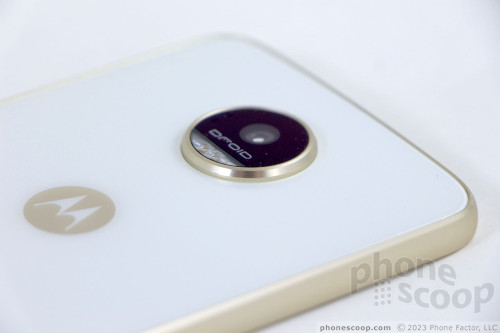
Motorola's proprietary module connector is positioned near the bottom of the rear panel. Motorola says it engineered the heck out of this magnetic system. Indeed, the magnets — which are hidden under the glass — seem incredibly strong and robust. For example, I was unable to shake modules off of the phone despite vigorous attempts. You may not be able to shake the modules off, but they do pop off easily with some pressure in the right spot.
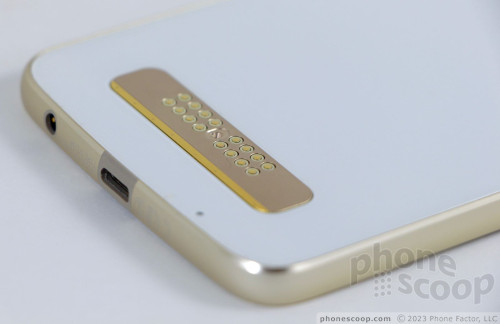
The glass rear panel cannot be removed and neither can the battery. That may be a dealbreaker for some. But really, it shouldn't be, considering one of the mods is a spare battery.
Absolutely nothing about the Z Play suggests it is less refined than the Z and Z Force. If anything, the glass surfaces make it look even more polished. It is a really nice piece of hardware.
Screen
In order to drop the price point, Motorola had to drop the display resolution from quad HD (2K) down to 1080p full HD. The display still measures 5.5 inches across the diagonal, but has significantly fewer pixels. But your eyes probably won't notice; full HD is a sufficient resolution for this screen size and ensures that on-screen elements are smooth and sharp. The screen's brightness is excellent for indoor use, but — like the Z and Z Force — only rates “adequate” for outdoor use. You need to boost the brightness all the way in order to see the screen under sunny skies. Color accuracy is quite good, as are viewing angles. I didn't see any brightness shift, nor color change when I tilted the phone back and forth. Bottom line: the Moto Z Play has a good screen.
Signal
The Z Play remained connected to Verizon's LTE 4G network at all times; not once did it lose signal. I was able to make calls everywhere I took the Z Play in the metro NYC area, and the phone easily held calls at highway speeds. Data speeds were quite good. I was pleased with how swiftly the Z Play was able to upload images to Twitter or download apps from the Play Store. The phone streamed high-quality YouTube videos and Spotify tracks without any hiccups. Motorola's wireless roots give the Z Play the solid network grip today's consumers demand.
Sound
Phone calls are slightly better via the Z Play than the Z or Z Force on Verizon's network, which is to say on par with most Verizon phones. Clarity is interrupted by distortion in the earpiece from time to time, but volume is quite good. This means I was able to hear calls in quiet places like my home or car as well as public spaces such as a coffee shop, mall, or city street. I'm glad Motorola was able to fine tune the Z Play's call quality. People I spoke to through the Z Play said I sounded "just ok."
The earpiece doubles as the speakerphone. When used as a traditional speakerphone (phone on a table/desk while you sit or stand nearby), the Z Play is decent, but not the best I've heard. The speaker produces enough sound for conversations in moderately noisy spaces, such as a moving car. Clarity via the speakerphone is decent, but introduced a bit more distortion than the earpiece, especially with the volume cranked up.
The phone includes Verizon's Advanced Calling, which delivers HD Voice over VoLTE. Call quality via HD Voice was clearer than over Verizon's regular voice network.
Ringers and alert tones could be improved with more volume, but the vibrate alert always got my attention.
Battery
Motorola stuffed the Z Play with a massive 3,510 mAh battery — that's 17% more capacity than the Z Force and 35% more capacity than the Z. The company claims the device can deliver up to 50 hours of mixed use, or more than two full days. My tests conclude that Motorola's claims are about right. There's no question the phone can go from breakfast on Day 1 to bedtime on Day 2 with a solid reserve still in the battery. I was never able to fully deplete the battery during my tests over a week's time. This phone crushes most others I've tested. If you want mega battery life, the Z Play should be your top pick.
The phone includes only the standard Android battery tool. This can be set to come on automatically, or switched on/off when needed. It reduces processor output, dims the screen, and cuts down notifications.
The Z Play supports rapid charging via the USB-C port. Motorola says 15 minutes of charging adds 9 hours of life to the Z Play. There's no doubt the phone charges rapidly.
Bluetooth, GPS, NFC, WiFi
The Moto Z Play offers excellent Bluetooth functionality. Pairing with other devices via the system menu was easy enough, but I used NFC pairing whenever possible. I connected the Z Play to speakers, headphones, PCs, and my car with little effort. Call quality was surprisingly good when pushed through a dedicated headset. Music sounded excellent through a pair of Bluetooth speakers.
The NFC radio supports Bluetooth pairing, as noted, but also works with Android Pay for mobile payments.
Google Maps made excellent use of the Z Play's GPS radio. The phone found me in a blink and worked great as live navigation tools when driving from Point A to Point B.
WiFi performance was good.
Software
Editor's Note: Since the Z Play runs the exact version of Android and carries the same apps/services as the Moto Z Droid and Z Force Droid, some of the content below has been pulled from our earlier review of those phone. Rest assured, we tested every app and every facet of the Z Play's operating system and have adjusted the text to reflect and changes accordingly.
Lock Screen
Motorola's lock screen has been among the industry's best for several years. Thankfully, Verizon Wireless did not mess with it.
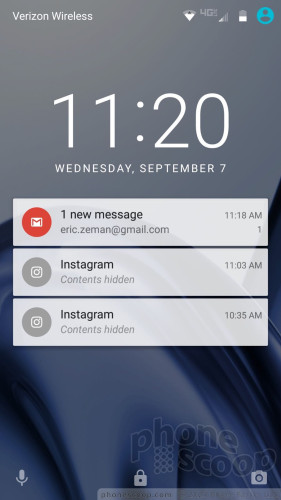
Notifications and other lock screen behaviors are now managed from a single spot, the Moto App. Moto Display can wake the screen regularly with a list of the current notifications; show important notifications on the lock screen as they arrive; or leave the screen entirely dark. It's up to you. Double tap the screen or wave your hand over the phone any time to see the time and notifications in list form.
If you press the screen lock button, the display wakes fully to show the clock, wallpaper, and notifications listed below the clock. There are also shortcuts to the phone and camera on this screen.
As far as security goes, the phone includes the trusty PIN, pattern, and password options, as well as a fingerprint reader.
The Z Play's fingerprint reader performed consistently better than that of the Z Droid. It was quicker to record fingerprints and far more consistent at recognizing fingerprints on the first try. The reader still required re-reads on occasion, but it was just as often my fault for not aligning my finger properly as it was the reader's for a mis-read.
Home Screens
I was worried Verizon and Motorola would over-do the software skin on the Z Play, but those fears were unfounded. It ships with Android 6 Marshmallow. The device has two home screen panels active out of the box. Moto Z Play owners can customize the typical stuff, such as wallpapers, widgets, and so on.
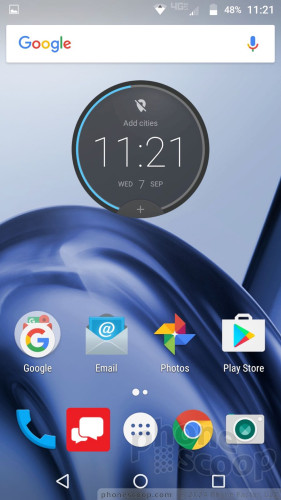
The home screen behaves as expected for an Android Marshmallow phone. Similarly, the app drawer, notification shade, and settings screens are all standard Android, and work accordingly. There are no themes or other fancy interface tricks on board.
Motorola did not stick the Google Now launcher on the Z Play, nor is there any other sort of alternate home screen experience (such as Easy Mode).
As for performance, the Moto Z Play dials back the processor specs when compared to the Z and Z Force. It packs a 2.0 GHz Snapdragon 625 processor with 3 GB of RAM and Adreno 506 GPU. The 600 series chips from Qualcomm are the company's mid-range processors, but you'd never know it using the Z Play. The 625 is one of the newer chips in this series. The phone never felt slow or bogged-down.
Camera
The Z Play uses the new Motorola camera app (first seen on the 4th-gen Moto G.) Gone is the odd semicircular control strip; in its place you'll see a much simpler and more accessible set of tools.
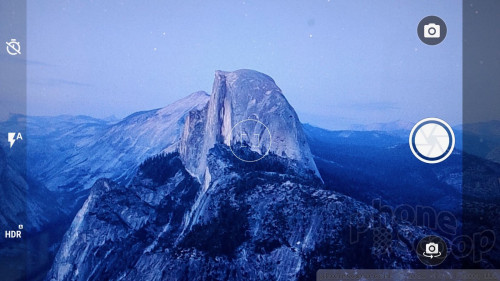
The Z Play does not have a dedicated physical camera button, but there are several ways to open the camera: a wrist-twisting gesture, a double press of the screen lock button, or the lock screen shortcut. The double press of the lock button is the quickest and most reliable method for launching the camera.
The camera would seem to have hardly any features at all. There are three controls on the left side of the screen (timer, flash, HDR) and three on the right (mode, shutter, front camera). I like that both the flash and HDR tools can be set to on, off, or auto.
As for shooting modes, the Z offers auto, video, slo-mo, panorama, and manual. The manual mode lets you take full control over focus, ISO, shutter speed, brightness, and white balance. The controls line the top of the screen and are easy to adjust. It's a shame the shutter only lets you select speeds as slow as one-sixth of a second; that's hardly long enough to get creative or take really great night shots. There's no 360 photo/video mode, which feels like an odd omission, nor is there any sort of GIF maker.
The default is always auto mode. Slide your finger up or down to zoom. Tap to focus and set exposure. Press the shutter button to take standard pictures, or press-and-hold to capture a burst. Swipe from the left side of the screen to access the settings.
The layout makes far more sense than the old camera app from Motorola. It's easy enough for novices to use effectively and flexible enough in manual mode to unleash at least some degree of creativity.
Photos/Video
From a technical standpoint, the Z Play's camera hardware falls in between the Z and Z Force. The Z Play has a 16-megapixel camera with an aperture of f/2.0, laser-assisted autofocus, phase-detection autofocus, and pixels that measure 1.3 microns. The Z and Z Force have 13- and 21-megapixel cameras respectively, with wider apertures but smaller pixels. Does the Z Play take good pictures in comparison? Sure.
The majority of images I shot with the Z Play were in focus, properly exposed, and showed accurate white balance. I saw some grain in low-light shots, but it wasn't ruinous. Using the flash works really well when you are near your subject. The 16-megapixel resolution means you can blow up images fairly large. I was pleased with the amount of detail visible when zoomed in close on images.
The 5-megapixel selfie camera does all right. It includes what has become a standard software tool this year: self beautification. The tool does away with wrinkles and spots, but sometimes goes too far and the results look a bit less than natural. There's an LED selfie flash. The 85-degree wide-angle lens helps get more of the background in each shot.
The Z Play does well enough that you can use the phone for most of your photography needs.
You can use the Z Play to capture video up to 4K in resolution, as well as 1080p HD resolution at fast and slow speeds for slow-motion/timelapse. Most people will be happy with the full HD video results. The video I snagged was in focus, properly exposed, and showed accurate color. Like the still camera, the video camera was prone to grain in low light, but I've seen worse.
The Z Play is a fine device for most everyday videography.
Bloatware
The Moto Z Play Droid is sold by Verizon Wireless, which means it is packed with lots of undeletable crap apps. As expected, Verizon-branded apps are the most numerous, with Caller ID, Cloud, Message+, my Verizon, NFL, Voicemail, VZ Navigator, and VZ Protect. Others include Amazon, Audible, Candy Crush, Cookie Jam, Farm Heroes, Juice Jam, and Slacker. Of these, only the games can be scrubbed entirely from the phone. The rest can be hidden and/or disabled, but not deleted.
The phone comes with 32 GB of storage — of which users have access to 18.65 GB. The device does support memory cards up to 2 TB. I'd advise you to supplement the built-in storage with a memory card, particularly if you plan to pick up the Hasselblad True Zoom mod.
Moto Mods
The chief selling point of the Moto Z Play is its compatibility with the Moto Mods ecosystem of swappable modules. They snap onto the back of the phone with magnets. The Moto Mods are easy to attach and detach thanks to a notch built into the bottom of each. Don't worry about the mods falling off. They might pop off if you drop the phone, but they won't become dislodged during normal use.
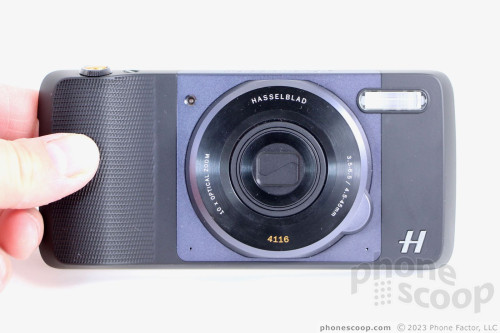
Motorola said the mods and magnetic connector were designed to be robust. This includes hot-swapping, which means the Z Play isn't going to crash if you yank a mod off without warning.
Now that we're about two months post launch, there are a handful of Mods to check out, including a battery pack from Tumi, a set of speakers from JBL, a projector from Lenovo, and several dozen alternate rear plates. The latest Mod — and the one being marketed alongside the Moto Z Play — is the Hasselblad True View Camera.
Hasselblad True Zoom Camera
First, the True Zoom is not an independent camera. You cannot use it without a Z Droid; it has no battery of its own and needs power from the Z Play. The True Zoom is about the same size as an independent point-and-shoot camera, so that's kind of a bummer.
The True Zoom snaps onto the back of the Z Play like any other mod, except that it completely covers the phone's camera. It fits firmly and won't fall off, despite its weight. (Yeah, this thing is heavy.) It weighs about 5 ounces by itself, so the combined phone and Mod are close to 11 ounces. The combo is also stupid bulky. At a full inch (26mm) thick, the phone+mod was too big for my jeans pockets. No way it would fit in there. Only my loosest cargo shorts can accommodate the pair. The added physical controls, however, might be worth the bulk.
The Hasselblad adds a curved grip on the right to help you hold the phone, like a traditional dSLR might have, but at a smaller scale. The True Zoom has its own gold shutter button, zoom dial, and power button. Pressing the power button turns on the camera and wakes the Z Play. Alternately, you can wake the camera directly from the app or the writ-twisting gesture common to Motorola phones. I love having the zoom dial and two-stage shutter button to focus and snap the shutter. They work really well.
The True Zoom has its own 12-megapixel sensor and xenon flash. The flash is hella bright and has a greater range than any flash built into a smartphone. When the device is on, the lens protrudes fairly far from the body of the mod. It produces 10x optical zoom and includes optical image stabilization to help reduce shake. Lastly, it can capture images in RAW format, which gives you the ability to fix exposure and white balance issues after the fact.
Images — including RAW files — are stored locally on the phone itself and not the Hasselblad. That's good, because extracting images from the mod would surely be a pain. (Just beware that RAW files can be huge.)
With the True Zoom attached, the Moto Z Play Droid loads a modified version of the Motorola camera app. It's clearly based on the standard Motorola camera app, but offers a wider range of shooting modes (auto, sports, night portrait, backlight portrait, night landscape, and landscape). They all work about as you expect them to.
The Hasselblad camera app isn't quite up to speed. It takes a hair longer to focus, capture, process, and store images than the stock camera does. When shooting in auto mode, the Hasselblad is too slow to focus on moving subjects. You absolutely have to use the sports mode to boost the performance a bit. My biggest gripe is that you lose the Z Play's manual camera mode. You cannot take control over ISO, exposure, shutter speed, and white balance when using the Hasselblad: you're stuck with the few predetermined shooting modes offered by the Hasselblad app. Boo.
How are results? Not bad, not bad. The optical zoom is definitely better than digital zoom, and the OIS helps keep zoomed-in shots in focus. Using the full 10x zoom, however, introduces a lot of shake issues and more or less mandates a tripod for the best results. (Did I mention that the True Zoom doesn't have a tripod fitting? It doesn't.) Color and exposure are good. I didn't see any grain, and that's a plus.
Oddly, the Hasselblad shoots 1080p HD video, but not 4K video.
The Hasselblad True Zoom is a pricey mod. Verizon will sell it to you for $250 and Motorola will sell it to you for $300. I don't think the results warrant the added expense, especially considering you can buy an entry-level dSLR for that price. But I understand the Moto Mods ecosystem probably excites a particular type of consumer and I like the idea of the modular approach.
Wrap-Up
All things considered, the Z Play from Motorola makes far more sense than the Z Droid or Z Force Droid. The Z Play's hardware is every bit as good as the Z and Z Force, and the performance of the lower-cost device is close enough that the differences aren't worth qualifying.
The Z Play is an attractive piece of hardware that was designed with care and manufactured to the highest standards. The phone has a nice screen, solid wireless speeds, and just about the best battery life I've seen from a modern smartphone. Call quality could be a smidgen better, and — aside from some undeletable bloatware — the Android user interface is straight-forward and downright useful.
I'm pleased with the camera app and the performance of the built-in camera. The optional True Zoom mod from Hasselblad adds 10x optical zoom and optical image stabilization, but isn't as quick on its feet and it's hard to say that it adds any real value. I do like that the Z Play handles the full ecosystem of other Moto Mods, including speakers, projectors, rear shells, and batteries. That's a stronger selling point for me.
Let's talk economics. The Moto Z Droid Edition is $625 and the Moto Z Force Droid Edition is $720, give or take. The Z Play Droid is far less at $400. Given how similar the Z Play is to its stablemates in appearance, quality, and performance, I wholly recommend you save $200 - $300 and go with the Z Play. Think of it as extra cash for the Hasselblad or some other Moto Mod. The Z Play may not be the best Z on paper, but it's the best Z for real people.
Last, we have to point out that the full lineup of Z-branded handsets will soon be sold in unlocked GSM variants in the near future. If you're Verizon-averse, you can pick up AT&T/T-Mobile compatible versions in a few weeks.
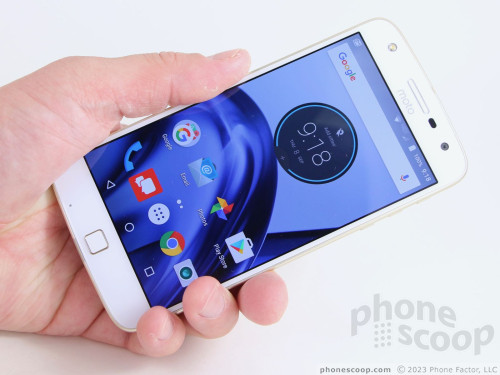
Comments
No messages


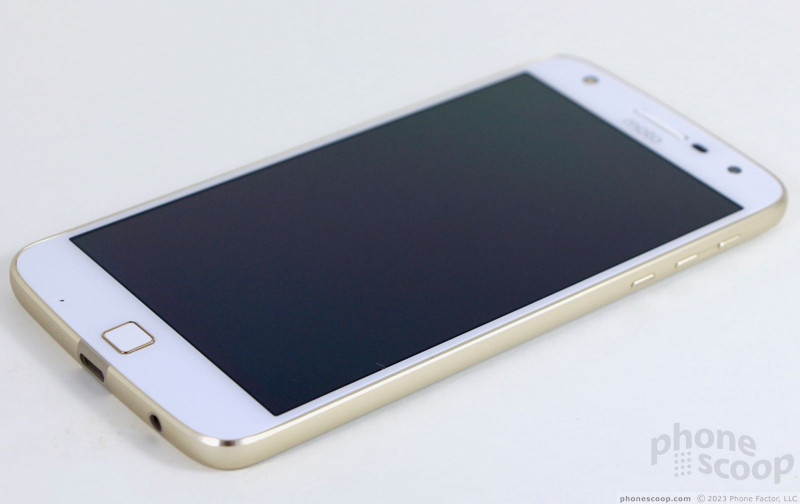































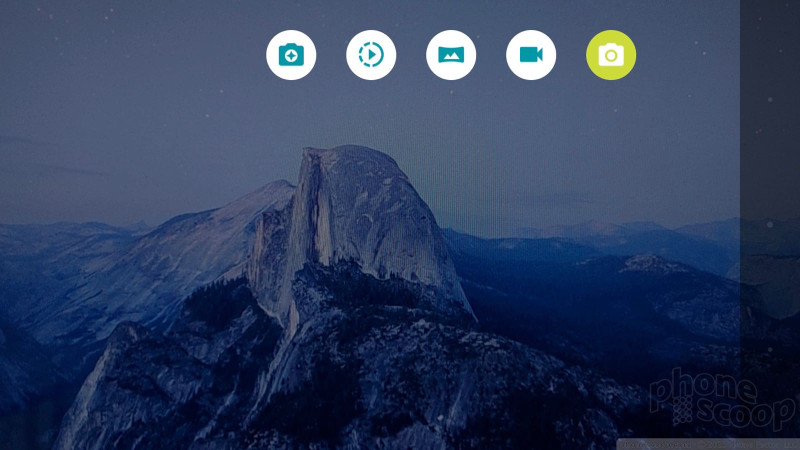




















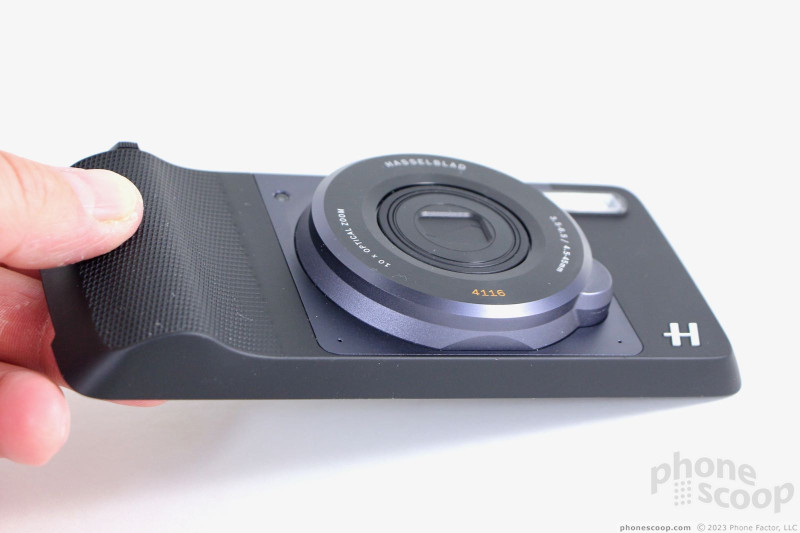






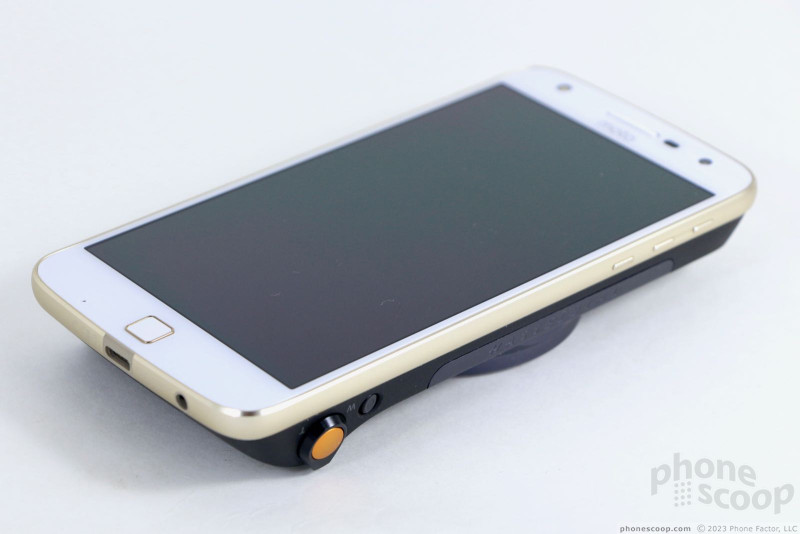














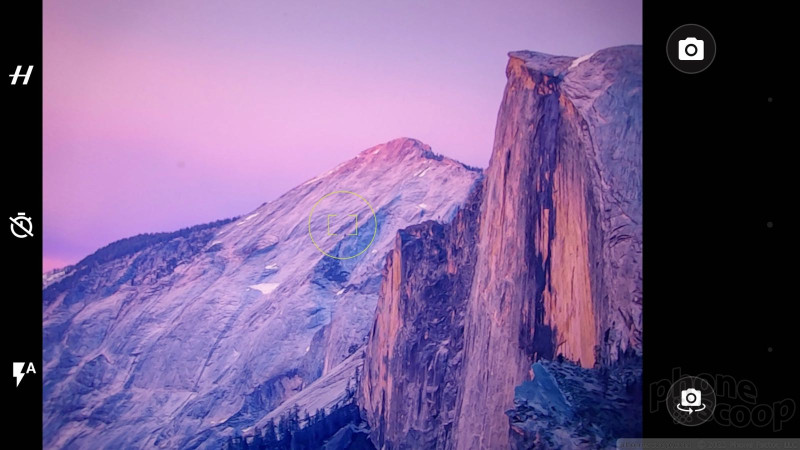


















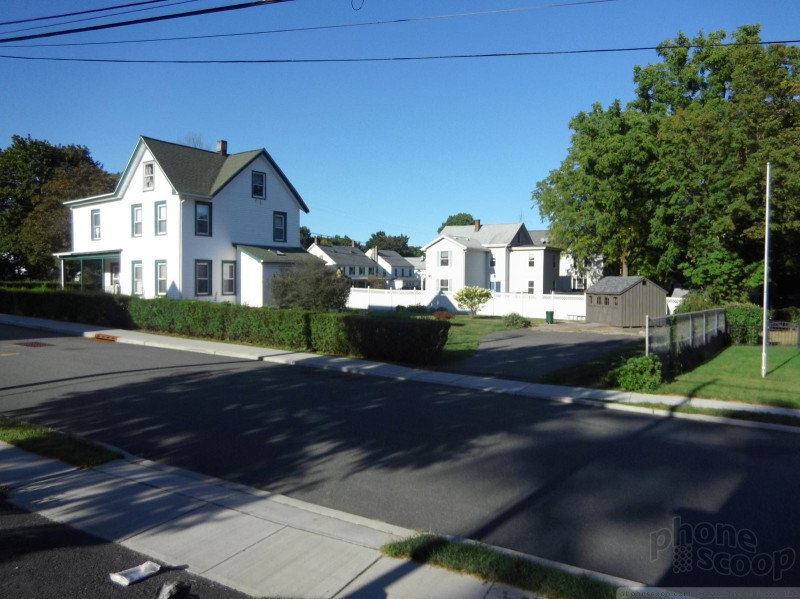



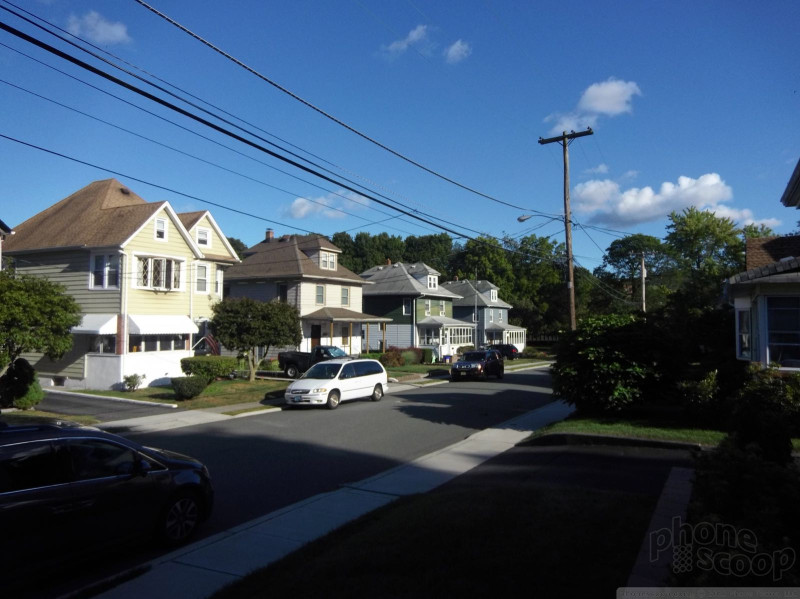



 5 Best Unlocked Smartphones
5 Best Unlocked Smartphones
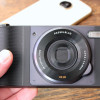 Hands-On with Moto Z Play Droid and Hasselblad True Zoom
Hands-On with Moto Z Play Droid and Hasselblad True Zoom
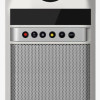 Motorola Announces Moto Mods Finalists
Motorola Announces Moto Mods Finalists
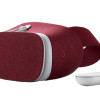 Google Improves the Selection of Daydream VR Apps
Google Improves the Selection of Daydream VR Apps
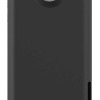 Motorola Debuts Two New Mods for Moto Z Series
Motorola Debuts Two New Mods for Moto Z Series
 Motorola Moto Z Play Droid
Motorola Moto Z Play Droid




